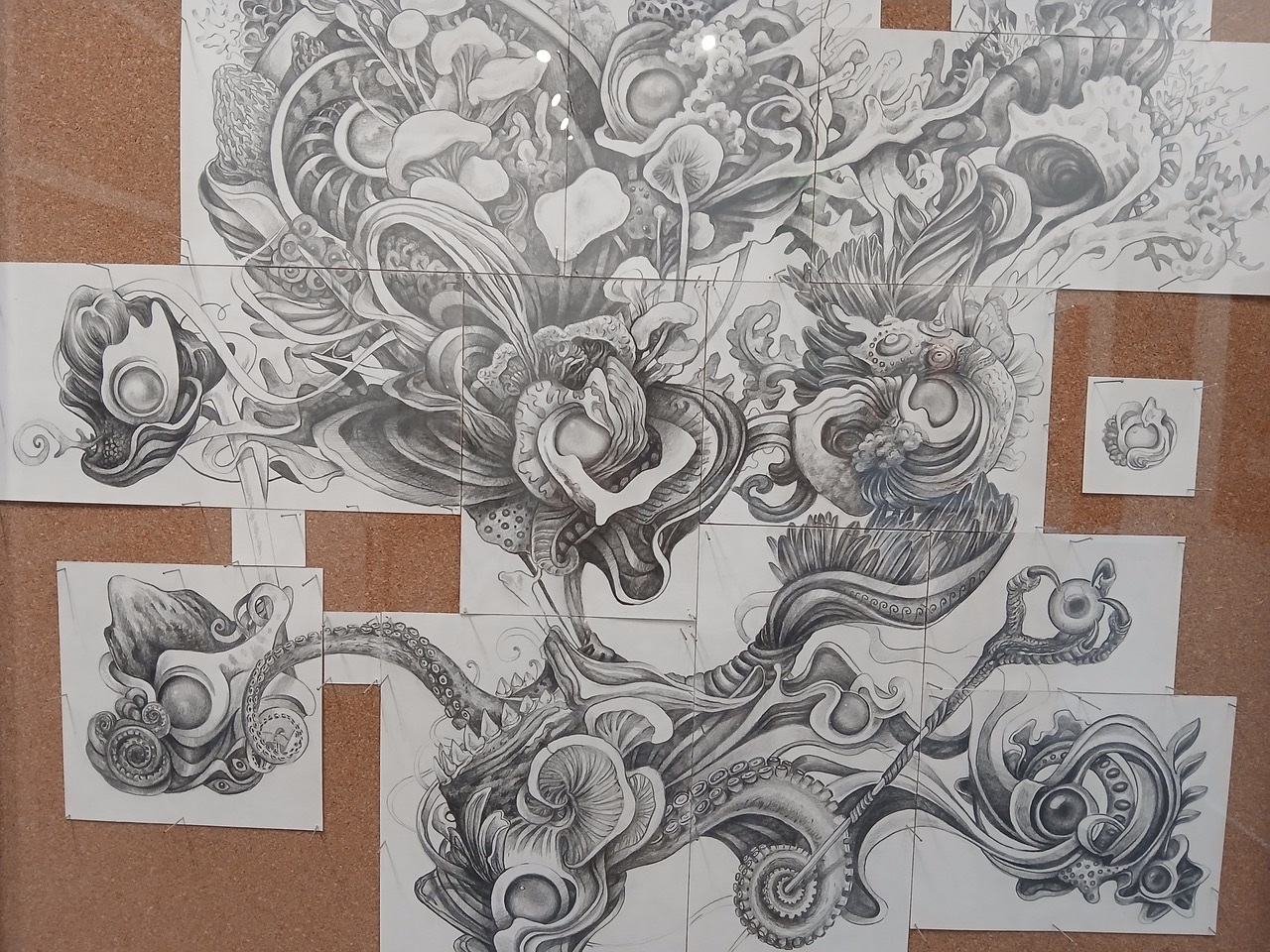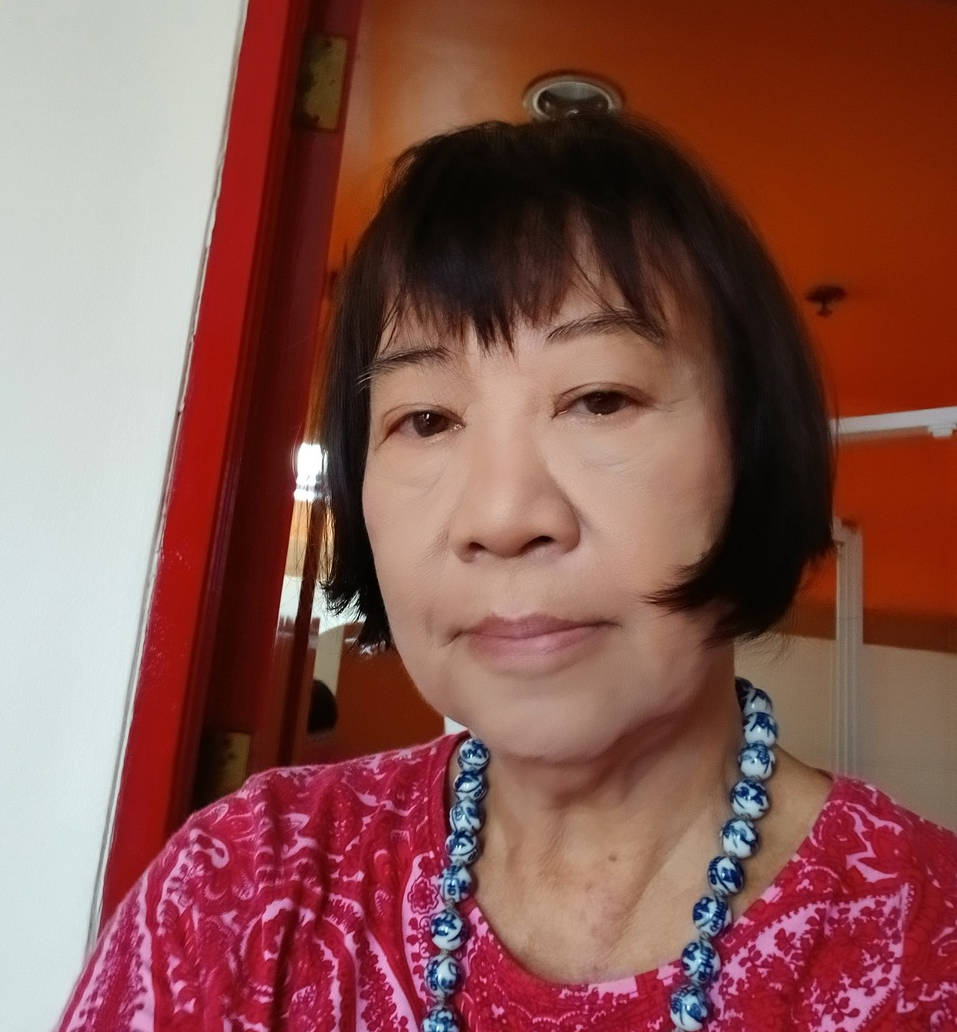Sharing their inner world of idyllic innocence, Vision Arcadia, an exhibit by the alumni artists of the University of Santo Tomas (UST), runs until September 22, 2014 at ArtistSpace, Ground Level, Ayala Museum.
With its first use recorded in 1847, the word “arcadia” is defined as “a region or scene of simple pleasure and quiet,” named after Arcadia, an area in ancient Greece frequently chosen as a background for pastoral poetry.
The relentless search for one’s paradise does not really exist in reality, but more in one’s imagination. The exhibit certainly takes the viewers into that imaginary space of folktales and myths, nature and its power, the family as an anchor, state of mind and being, eternal hope, and more mythical creatures.
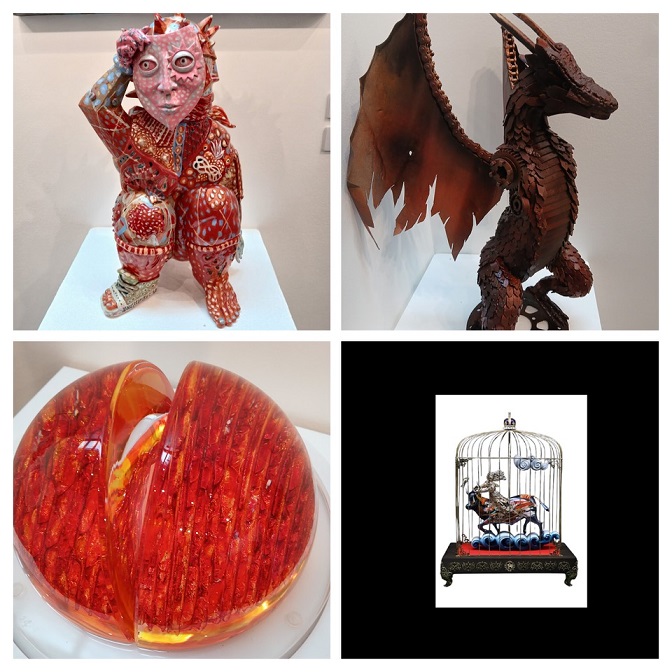
Selected works
A total of 26 artworks are on display, mostly paintings and some sculptures, with 21 participating artists who are UST alumni from its fine arts college and other departments.
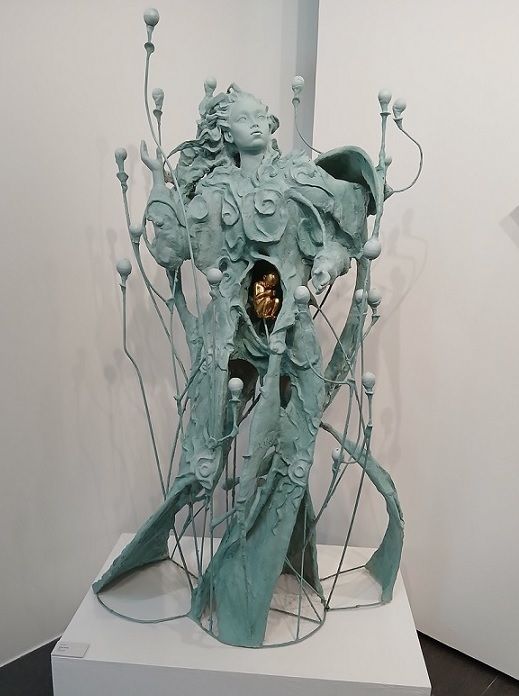
Sierra Madre, 2024 and Madonna de Manila, 2024, an oil on canvas painting, by Paul Balan (Paete, Laguna): Sierra Madre is a mixed media sculptural work in a light green with whitish tinge of a female goddess, face raised with arms akimbo, her body in a defiant stance with graceful curlicues and surrounded with light bulbs like flower buds adorning the body. Its stomach area is open, revealing a small human figure in gold, in an almost fetal position.
Balan is the first Filipino U.S. Mint coin designer. He used to walk along the streets of Manila carrying his paintings and trying to sell them to banks. In 2002, he migrated to the United States, where he worked as waiter, forklift operator, mailman, to provide for his family. In 2008, he got involved with the U.S. Mint; his winning designs included the National Humanities Medal unveiled by former President Barack E. Obama and other designs for U.S. gold and silver coins.
The Power Within, 2024 by Marge Organo: Made of optical glass, it is a dome with an opening cut at its center. Inside are broken slices of deep orange that looks like surrealistic fruit. The artist says it was inspired by the sun, and its life-giving power to all living things on earth.
Organo used to run the family’s pharmaceutical business and a mother of four grown-up children. It was only in 2014 when she took up formal lessons in drawing and sculpture using clay and cold cut resin. She got interested in glass sculpture and studied at The Studio of the Corning Museum of Glass in New York in 2015. Further studies led her to the Secondary School of Glassmaking in Kamenicky Senov, Czech Republic, the oldest school of glassmaking in the world, in 2018.
Other sculptures include Richard Buxani’s “Rooster,” 2024 made of copper on wood; Gean Sollestre’s “Bakunawa,” 2023 made of mixed media welded metal; Janos Delacruz’s “Kuya Daks,” 2022; and Noli Principe Manalang’s “Vanishing Allegiance,”2024, a sculpture in the round on a pedestal.
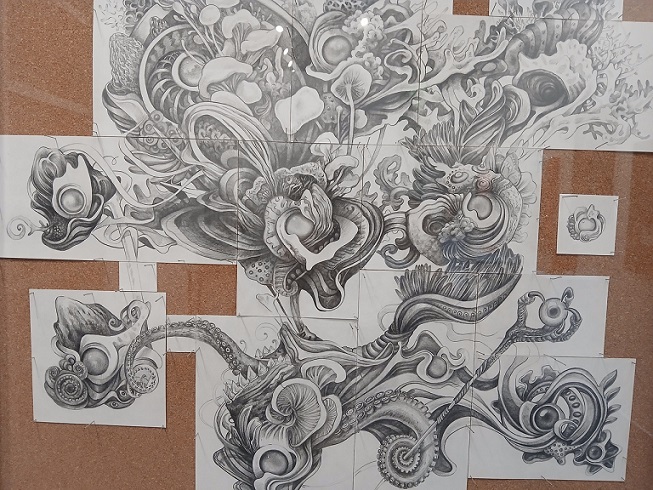
Obsessions, 2024 by Emman Acasio (b. 1984, Lemery, Batangas): Using graphite collage on board, he describes the work Obsessions as a collage of drawings of various ideas and concepts, made from “unconscious scribbles, creating forms in gracefulness and calm.”
Acasio frequently features the endangered animals of the country, like the sea turtles or pawikan and tarsier, in the face of climate chaos. He envisions a lush environment for the world’s plants and animals, as part of our human responsibility.
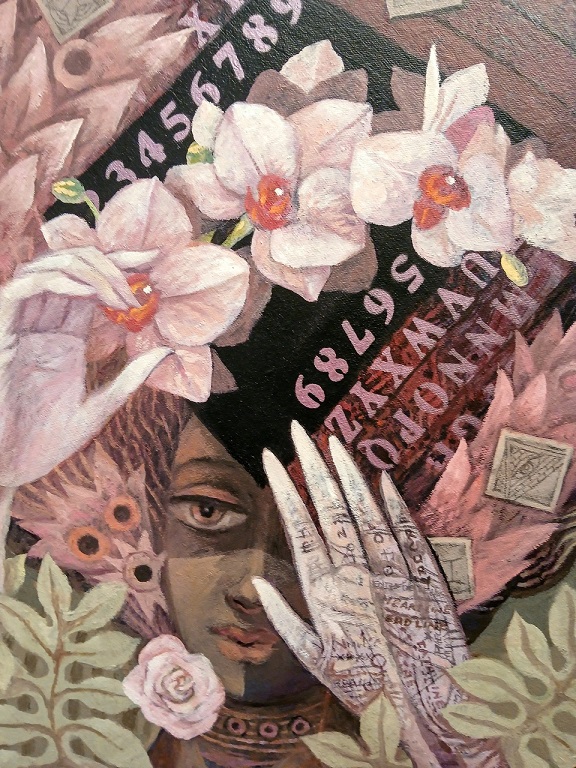
Diwata_ Katutubo 2024 by Fil Delacruz. Photo by RC Ladrido.
Diwata: Katutubo, 2024 and Diwata: Lihim, 2023 by Fil Delacruz.(b.1950, Hagonoy, Bulacan): A painter and master printmaker, he specializes in mezzotint prints.
His work is known for using indigenous and ethnic forms and symbols, playing on the theme of the universal woman, “her role as mother, as protector, lover, muse, and source of all divinity.” A tribute to the universal woman, his diwata series is his “ symbol of nature, beauty and my immortal muse.”
A recipient of the CCP Thirteen Artists Award in 1992, Delacruz was a lecturer at the UP College of Fine Arts. Currently, he holds art workshops in Parañaque.
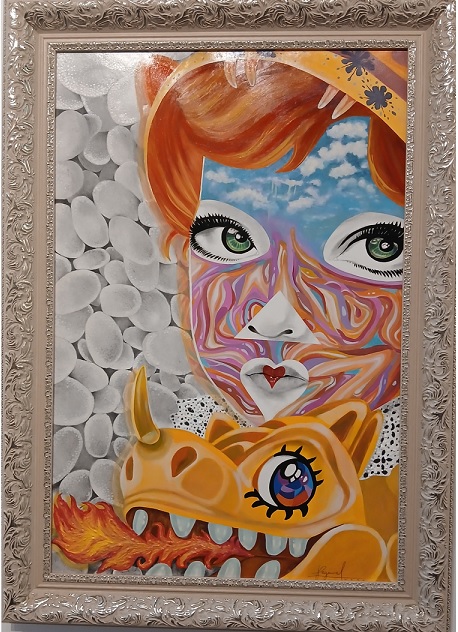
UST Fine Arts
The UST College of Fine Arts and Design traces its start as a department in the Faculty of Engineering in 1935. Other accounts state that the UST School of Drawing and Painting was established much earlier, in 1785.
In 1946, the College of Architecture and Fine Arts (CAFA) was established with programs of Painting and Sculpture. In 1952, courses in Advertising Arts and Interior Design were opened. In 1970s, courses in Commercial Arts, Furniture Design, Construction Supervision, and Industrial Design were added.
In 2000, the College of Fine Arts and Design (CFAD) was established as a separate academic unit.
Curated by Janos Delacruz, the exhibit is sponsored by the UST Atelier Alumni Foundation Inc.
